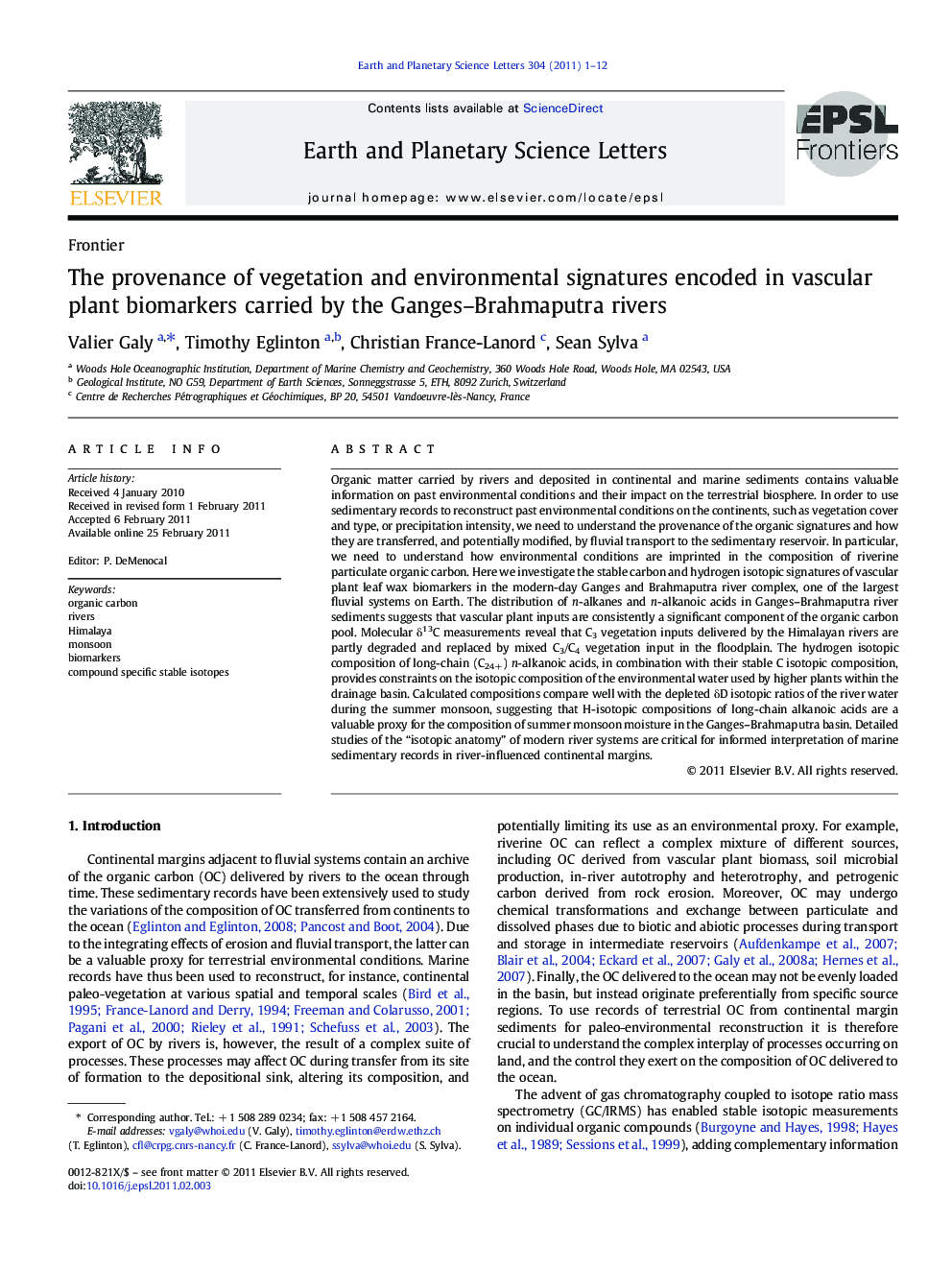| کد مقاله | کد نشریه | سال انتشار | مقاله انگلیسی | نسخه تمام متن |
|---|---|---|---|---|
| 4678190 | 1634832 | 2011 | 12 صفحه PDF | دانلود رایگان |

Organic matter carried by rivers and deposited in continental and marine sediments contains valuable information on past environmental conditions and their impact on the terrestrial biosphere. In order to use sedimentary records to reconstruct past environmental conditions on the continents, such as vegetation cover and type, or precipitation intensity, we need to understand the provenance of the organic signatures and how they are transferred, and potentially modified, by fluvial transport to the sedimentary reservoir. In particular, we need to understand how environmental conditions are imprinted in the composition of riverine particulate organic carbon. Here we investigate the stable carbon and hydrogen isotopic signatures of vascular plant leaf wax biomarkers in the modern-day Ganges and Brahmaputra river complex, one of the largest fluvial systems on Earth. The distribution of n-alkanes and n-alkanoic acids in Ganges–Brahmaputra river sediments suggests that vascular plant inputs are consistently a significant component of the organic carbon pool. Molecular δ13C measurements reveal that C3 vegetation inputs delivered by the Himalayan rivers are partly degraded and replaced by mixed C3/C4 vegetation input in the floodplain. The hydrogen isotopic composition of long-chain (C24+) n-alkanoic acids, in combination with their stable C isotopic composition, provides constraints on the isotopic composition of the environmental water used by higher plants within the drainage basin. Calculated compositions compare well with the depleted δD isotopic ratios of the river water during the summer monsoon, suggesting that H-isotopic compositions of long-chain alkanoic acids are a valuable proxy for the composition of summer monsoon moisture in the Ganges–Brahmaputra basin. Detailed studies of the “isotopic anatomy” of modern river systems are critical for informed interpretation of marine sedimentary records in river-influenced continental margins.
Research highlights
► Vascular plant inputs are a significant component of the riverine organic C pool.
► Himalayan OC is partly degraded and replaced by mixed C3/C4 input in the floodplain.
► δD composition of FAMEs records that of river water during the summer monsoon.
► δD composition of FAMEs is a proxy for summer monsoon intensity.
► Detailed studies of rivers are critical for interpretation of marine records.
Journal: Earth and Planetary Science Letters - Volume 304, Issues 1–2, 1 April 2011, Pages 1–12